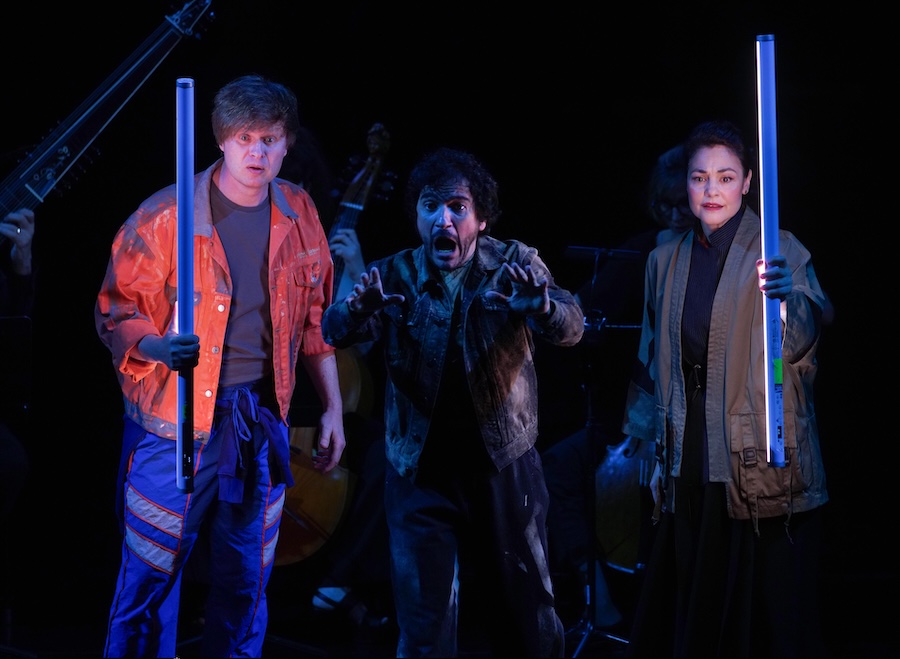Madrid, June 1, 2025.
When thinking about the baroque repertoire in the international operatic world, the French baroque opera from this period is not as popular as its Italian counterpart, despite the importance of composers such as Jean-Baptiste Lully, Marc-Antoine Charpentier, or Jean-Philippe Rameau. But this situation is even more pronounced in the Spanish operatic scene. For this reason, the premiere at the Teatro Real (which last year offered Charpentier's Medée in concert) of one of the best-known operas by the composer and great music theorist Jean-Philippe Rameau, Les Indes Galantes, is a significant event in the current operatic season.
This opera-ballet, with its beautiful music, tells of four gallant love stories, within a struggle between Hebe (love) and Bellone (war). This type of opera, based on courtly dances, lacks a strong plot , by the standards of its time, compared to those ones opera seria used to have. Here, dance is more important than singing. It is not a drama, just entertaining, a divertimento.
For its Madrid premiere, a touring production has been summoned, performing it in an apparently semi-staged version, led by French choreographer Bintou Dembélé , one of the pioneers of hip-hop in France, and maestro Leonardo García Alarcón , head and leading conductor of the Cappella Mediterranea ensemble. Based on a production of the complete work at the Paris Opera in 2019, Dembelé and García Alarcón now bring a cut version, around an hour from the original.
I've said before that it's an apparently semi-staging of the work because, in reality, the differences with a full staged production are not very clear. There are entirely modern, working-class neighbourhood aesthetics, there is lighting, and there is dramaturgy, even though the orchestra is on stage. The dances are performed by the Namur Chamber Choir and the Rualité dance company , directed by Dembélé. Despite the fact that the Teatro Real apparently announces the fusion of music with street dance, the latter doesn't actually appear as much. In fact, there are more stage movements, more or less choreographed and dramatized, than dances. Much of the production takes place with very little lighting, coming from light bars that the artists move from one side to the other, and from a huge circle of lights located high above the stage, which creates beautiful combinations. Dembélé places the mythological characters in the royal box, and occasionally, singers and dancers at different points in the hall, achieving a quite successful immersive effect. Diversity and multiculturalism are the leitmotifs of the production, judging by its aesthetics and the multiracial group formed by dancers and chorus. However, by reducing the work, especially affecting the third "entrance" or act, and by consisting of a chorus and soloists moving around the stage always wearing the same clothes, in almost total darkness, the bucolic, pleasant essence of the score is lost on stage. Finally, the promised hip-hop dance comes in the final section, now in a spectacular choreography, which reaches its zenith with the most famous fragment of the work, the chaconne chorus "Forêts paisibles," which always ends with an ovation from the audience.
Musically, García Alarcón managed to achieve a superb, agile performance from the orchestra, with each instrument sounding wonderfully, for example the bagpipes in the first act and flute in the beautiful aria of the second half, "Viens, Hymen," and the choir equally in its dual role of singing and dancing. Furthermore, in the number "Brillant soleil" from the second entry, the voices of the orchestral musicians joined forces.
The vocal cast, consisting of four soloists, each in charge of multiple roles, was remarkable as a whole.
Julie Roset led the cast, with her delightful and beautiful voice, as well as her mastery of coloratura in the prologue. The highlight of the evening, was her magnificent rendition of the aria "Viens, Hymen", accompanied by flautist Rodrigo Calveyra. She sang it from one of the third-floor boxes, surrounded by the audience. Her singing was uniquely beautiful, with an angelic tone.
Andreas Wolf is known in Madrid for his performances of Mozart operas. This time, he once again sang with his powerful voice, and his acting and vocal finest moment came in the second part, portraying the jealous Inca priest Huascar.
Tenor Mathias Vidal performed well overall, although some high notes in the fourth act caused him some difficulty. Soprano Ana Quintans sang at a good level.
Although the hall was not fully occupied, the audience applauded enthusiastically after the famous Forêts paisibles, which was encored at the end of the performance, and gave generous ovations to all the performers. Even while leaving the theatre, some people were seen humming the piece. It was a great pleasure to be able to hear the great Rameau's music at the Teatro Real, even in a reduced version.
My reviews are not professional and express only my opinions. As a non English native speaker I apologise for any mistake.
Most of the photographs are from the internet and belong to its authors. My use of them is only cultural. If someone is uncomfortable with their use, just notify it to me.
Any reproduction of my text requires my permission.





No hay comentarios:
Publicar un comentario